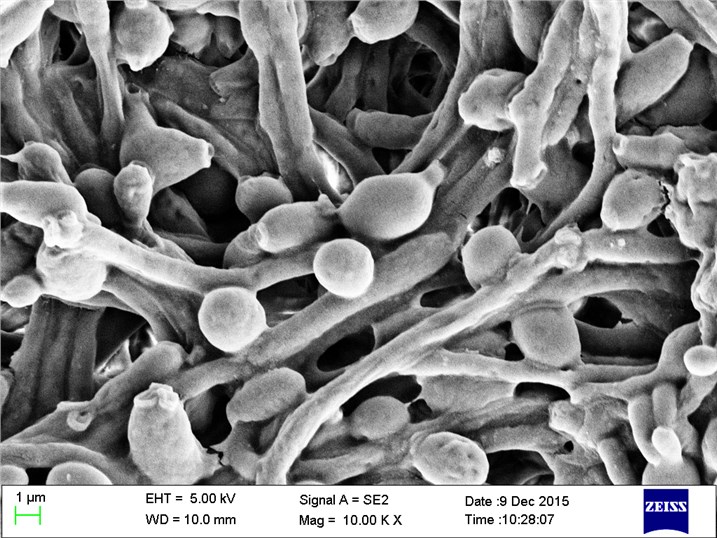Candida albicans
Fungi infection is often overlooked as a potential health problem. Recently, resistance to many antifungal drugs is now becoming a significant problem. Since only a limited number of antifungals are available, novel antifungals have to be developed to deal with this problem. As a CRO company who is competent in antifungal drug discovery, Creative Biolabs has taken a comprehensive approach to assist our clients in the antifungal drug discovery project.
Introduction to Candida Albicans
Candida albicans (C. albicans) is an opportunistic pathogenic fungus, which is a general member of the human gut flora. It is commonly a commensal organism but may become pathogenic in immunocompromised individuals under various conditions. C. albicans can be detected in the mouth and gastrointestinal tract in 40~60% of healthy adults, and it does not proliferate outside the human body. C. albicans is one of the few species of the genus Candida that causes candidiasis, which is a human infectious disease that results from an overgrowth of the fungus. What’s more, C. albicans is the most common fungal species isolated from biofilms either formed on human tissue or on (permanent) implanted medical devices.
 Fig.1 C. albicans visualised using scanning electron microscopy. Distributed under CC BY-SA 4.0, from Wiki, without modification.
Fig.1 C. albicans visualised using scanning electron microscopy. Distributed under CC BY-SA 4.0, from Wiki, without modification.
Pathogenesis of C. Albicans
C. albicans is a polymorphic fungus that can grow in several different forms, predominantly yeast, hyphae, and pseudohyphae. Regarding its pathogenicity, the parallel-walled true hyphae and ovoid-shaped budding yeast forms are the most important. The hyphae form is more common for infection, while the yeast form is supposed to be important in the spread of this microorganism. C. albicans possess special sets of glycosylphosphatidylinositol (GPI)-linked cell surface glycoproteins which allow it to adhere to the surfaces of microorganisms. In addition to adhesion, the glycoproteins can also act as invasins that contribute to the invasion of C. albicans into host epithelial and endothelial cells.
What’s more, C. albicans is capable of forming biofilms on living and non-living surfaces, such as catheters and mucosal membranes, respectively. Recent data indicate that biofilms can protect C. albicans colonization from neutrophil attack and deter the formation of reactive oxygen species.
Antifungal Drugs Against C. Albicans
There are relatively a limited number of antifungal drugs that can successfully treat Candidiasis. Antifungal drugs commonly used for candidiasis treatment can be divided into five major groups according to their mode of action.
Antifungal Drug Discovery Services Against C. Albicans at Creative Biolabs
Creative Biolabs leverages our rich antifungal drug discovery expertise to support the rapidly growing interests in this field. Our scientists are committed to providing our worldwide client with a comprehensive service package, ranging from target identification and validation, hit identification, hit to lead, to lead optimization and IND enabling. At Creative Biolabs, we have experts with keen project and program management skills, as well as superior customer service and advanced facilities.
You may also be interested in other fungi that may be implicated in candidiasis:
With years of experience, Creative Biolabs has been recognized as a reliable partner in antifungal drug discovery. A group of senior scientists is committed to assisting you in facilitating your antifungal drug discovery research and expand the influence of your projects. Please contact us for more information.
For Research Use Only.
